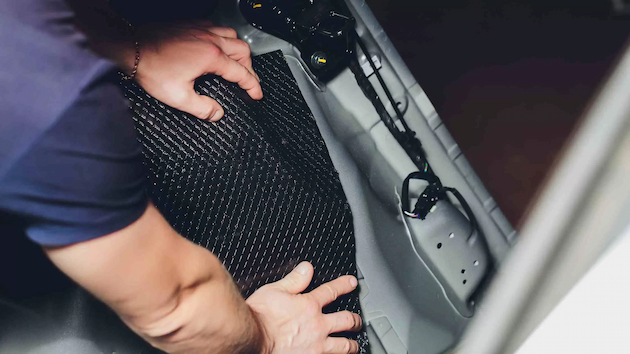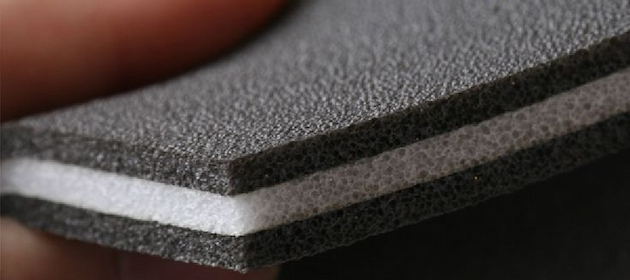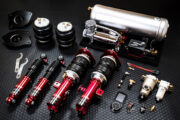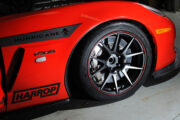Grinding, thumping, rattling, clunking, banging, popping, screeching and whining. These are Just a few of the annoying noises that you’ll hear from the inside of a car. And some can go on long and loud enough to drive you mad. If this is you, it’s time to check where those sounds come from and get them sorted.

What is Soundproofing?
Soundproofing, or sound deadening, is essentially eliminating or limiting the passage of sounds from one area to another. For cars, this means nulling a range of different noises from the engine, exhaust, tyres, and transmission, as well as road and ambient noise, at least to tolerable levels that will allow for a normal conversation, or listening to music at a reasonable volume.
Older cars suffer the most in this respect. But bigger vehicles like utes and vans aren’t far behind. And while soundproofing is getting better in new cars, it’s one area where carmakers do some cost-cutting. Unless of course, you spend upwards of 6 figures on a luxury car. These are where you’ll find multiple layers of sound-deadening materials in different parts of the car to drone out any sounds or vibrations.
How is Soundproofing Done?
Isolating sounds at the source is the best way to prevent them from creeping into the cabin. And is the best way to prevent different car parts from transferring sounds to other parts, in effect causing resonance and sounds getting louder. One of the main culprits in this sense is the car floor. Sounds originating here need to be deadened and damped with the right auto floor insulation materials.

Depending on how much space you have under the carpet, a single butyl rubber mat will be good in taming most sounds, but the addition of thicker car underlay or mass-loaded vinyl adds enough weight to dampen or stop sounds in their tracks. Doing things in layers and different stages brings the best results and a whisper-quiet interior that you can enjoy.
The Materials Used
Older cars are louder for a reason. They use tar or bitumen-based soundproofing materials that can go brittle and start to smell over time. And they become less effective in reducing noises when they begin to clump and leave exposed areas of the car floor. To get the best possible car floor soundproofing, this should be removed and replaced with a pressure-sensitive butyl rubber layer.
This is thin, at only 2mm, and easy to apply to a cleaned floor panel (use wax and grease or methylated spirits) with the adhesive backing sticking and conforming to any type of shape and surface. The material is also waterproof and heat resistant, so ideal to protect the car floor from rust and keep heat from the engine, transmission, and exhaust at bay. The same material can be used on newer vehicles with noise and vibration issues.

You can leave the job here, or go for the specially-formulated acoustic liner underlay to get rid of any noise still coming through. This is a thicker dual-layer foam material (between 4 and 12mm depending on the vehicle) that further insulates the cabin from sound and heat. Like the butyl layer, this car floor sound-deadening material is easy to apply, with the self-stick backing, and even simpler to cut to the desired shape. An added benefit is that it retains its form once set, and won’t rot or lose adhesion over time.
The combination of butyl mats and acoustic underlay is one way to get a quiet cabin. Another is combining the butyl auto floor insulation with a mass-loaded vinyl for damping weight. This is heavier than the acoustic liner and comes in a similar thickness of 12mm. It helps to smother airborne noise from the engine, road, tyres, etc.
The combination of closed-cell foam and vinyl is much better than the cotton jute or shoddy in older vehicles and is the material found in current high-end luxury cars. This can be used to line the cabin and boot floor, but also works well in firewalls and designated cargo areas. A heavier and thicker variant of mass-loaded vinyl is used in trucks, vans, and utes, where it does particularly well to reduce exhaust drone.
Most sound-deadening projects start with the floor pan, as this is the biggest vehicle area. But insulating the rest of the vehicle is just as important. The same or similar materials will remove noise and prevent vibrations from the doors, roof, quarter panels, wheel arches, and bonnet.
Pros of Sound Insulation
The obvious benefit is that you get a much quieter cabin. This can’t be more stressed. There is considerably less or no road, engine, tyre, wind, exhaust and transmission noise to distract or annoy you. Both drivers and passengers get to appreciate the quality of the car stereo, talk without shouting, or enjoy the silence.
Another benefit of equal importance is that vehicle floor insulation also prevents the cabin from getting overly hot in summer or cold in winter. It additionally keeps radiant heat from hot car parts away. And finally, with all products being waterproof, they won’t cause rust pockets from forming if you’re clumsy with drinks or coffee. A versatile addition to any car if you’re after a quiet and comfy ride.


